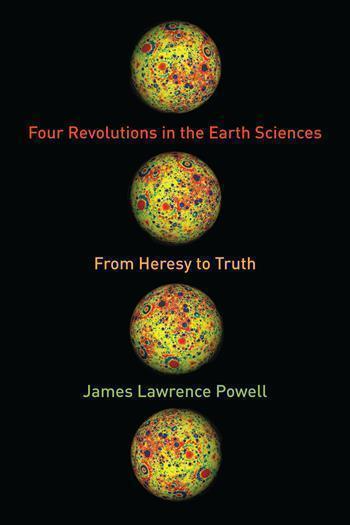
James L. Powell’s Four Revolutions in the Earth Sciences (2015) is an excellent book that reviews four geoscience revolutions: accurate geologic dating techniques, the theory of plate tectonics, the discovery of an era-ending meteor impact, and the advent of anthropogenic climate change. Far too many histories of science these days rely on secondary materials and repeat urban legends. This book relies heavily on original sources. I would gladly use this book in a course on the history of geology.
“But they persecuted Galileo”
The first important lesson to be drawn from this book is that all four revolutions were revolutions. They were all attempts from outside to change the status quo. None was a counter-revolution, an attempt by insiders to reverse or stop a change in defense of a conservative status quo. Indeed, I cannot think of a single case in history where science underwent a full-fledged revolution, then abandoned the new paradigm and returned to the old one. (Though admittedly, sometimes elements of the old paradigm are salvaged or re-purposed after a revolution). There have been cases where a theory was embraced enthusiastically for a while by a faction of scientists, and then dropped, but it seems that there have never been complete reversals of real revolutions.
This point is important because almost everyone who appeals to the slogan “science has been wrong” is trying to block or reverse change. Climate denialists aren’t trying to advance a theory even more radical than the greenhouse effect; they’re pretending that nothing at all is happening. Anti-evolutionists don’t have an alternative to natural selection that’s even more innovative and predictive; they want to retain a literal interpretation of the Bible. Medicine once believed that every disease was unique to the patient, that the patient should direct his own care, and that diseases resulted from imbalance in the body. That was 200 years ago. It all sounds very modern and “holistic,” but it was abandoned for a very good reason. It simply didn’t work. (Then. Elements of it can be useful now, but only in conjunction with the discoveries of the last 200 years.) But lots of people today want to revert to a long-abandoned model and, ironically, accuse medicine of being resistant to change. We can state a general principle here. Anyone who appeals to the slogan “science has been wrong” (especially if they invoke Galileo) is almost certainly on the wrong side, and is generally protecting the status quo from change. They are the exact opposites of the heroes of Powell’s book.
Faced with the slogan “science has been wrong,” it isn’t helpful to appeal to the “self-correcting” nature of science. Such appeals impress nobody and have done very little to improve scientific literacy. Saying that science is “self-correcting” amounts to conceding the central point of the opponents of science: science is often wrong. Opponents of science, on the other hand, often rely on written scriptures which have no need of correction, indeed, where the very possibility is heresy or theoretically impossible, like improving on the value of pi. Or they rely on intuition, which they consider superior to science because it’s “practical.” For a nation whose very position in the world was built on innovation, Americans have a perverse tendency to idolize opposition to change. In point of fact, “practical” people have an abysmal record when it comes to resisting innovation. “Seward’s Folly,” “Get a horse,” “Humans will never fly,” ridicule of Robert Goddard’s vision of going to the moon, and William Proxmire’s infamous “Golden Fleece Awards” were all the opinions of “practical” people. But believers in untrained intuition think that science will sooner or later self-correct to what they considered obvious all along, so why change?
A second principle suggests itself. You almost never hear participants in a revolution accusing their scientific opponents of conspiring against them or having ill motives. They can’t. If they’re going to get their ideas published, they have to observe normal professional courtesy. The conspiratorial, snide, sarcastic tone typically comes from entrenched insiders. But the really extreme cases come from outside the scientific mainstream: trade and self-published books, and these days, blogs and on-line comments. Trying to keep up with crank science in the age of the Internet is like trying to mop up a tsunami with a Q-tip. I have observed and written on pseudoscience for fifty years, and decades ago I noticed that it almost invariably has a strong conspiratorial tone. So the second general principle we can state is that the single most infallible sign of the crank is a belief in conspiracies. And when people within science itself begin writing about some emerging theory with that sort of tone, it’s a dead giveaway they’re on the losing side.
These are some of the reflections that Powell’s accounts of these four geological revolutions occasioned in me. But let’s talk about the accounts themselves.
Next up in part 2: radiometric dating and plate tectonics.
Steven Dutch is Professor Emeritus in the Department of Natural and Applied Sciences (Geoscience), University of Wisconsin–Green Bay, and the coauthor, with Joseph M. Moran and James S. Monroe, of the textbook Earth Science (Belmont [CA]: West/Wadsworth Publishing Company, 1998). He is signatory #424 to Project Steve.
